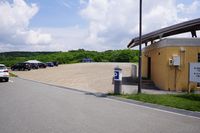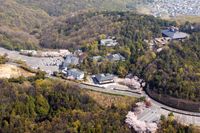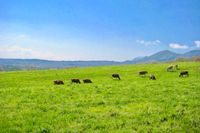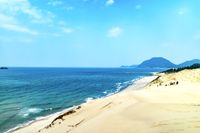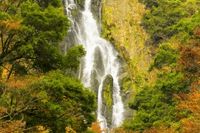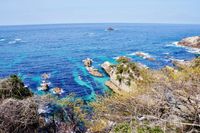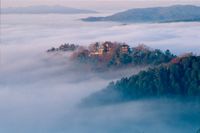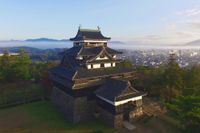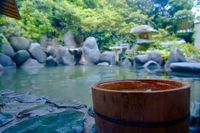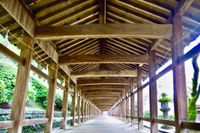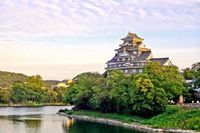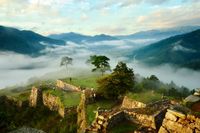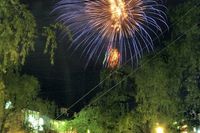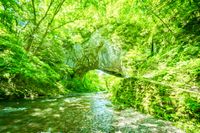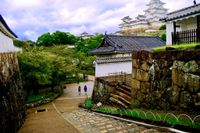Misasa Onsen
鳥取県/東伯郡三朝町

Description
This is a hot spring in the centre of Tottori prefecture. With 900 years of history, the onsen was loved by writers such as Yosano Akiko, Nogushi Ujo and Shiga Naoya. The area was known as a place of healing - so much so, that it was known as the place "where illness disappears by the third day of being here". Along both sides of Mitoku River, there are various traditional Japanese Ryokan, making this a popular onsen town to experience the nostalgia of the Japan of times past.
Homepage
Address
Nearby Car Night Spots
Nearby Activities
There is no nearby activities
Ranking Stations
(Bonfire BBQ) Chita Mihama Noma Beach Station
¥3,500〜
/ per nightAichi Noma, Mihamacho, Chita County
4.7
(42)Vanlife BASE | 45 min. from Narita Airport / Perfect for campervan travel/A seaside town rich in nature/Japanese countryside town/welcome traveler
¥7,000〜
/ per nightChiba Koseki, Kujukuri-machi, Sambu-gun
5.0
(61)Shin Meishin Suzuka PA (inbound) RV Station Suzuka * With Power!
¥2,200〜
/ per nightMie Yamamotocho, Suzuka-shi
4.3
(156)Nearby Drive Spots
Hiruzen Kogen
This is a highland area in Norther Okayama prefecture of an altitude of 500-600 meters. It has Japan's largest jersey cow field as well as numerous camping facilities, and attracts many visitors that wish to escape from the heat. It is said that the area inhabits a ghost known as "Suiton" which is said to appear, and statues of it exist around the area.
Tottori Sand Dunes
This is a 16km coastal sand dune, the largest in Japan, situated in Tottori prefecture. The three sand dunes are lined more or less in parallel with the Japan Sea, and the second middle sand dune, known as "the horse's back" is the most famous photo spot. The area is also popular for paragliders, hangglidesr and sand boats.
Kanba Falls
This is a waterfall in central Okayama prefecture. It has a height of 110m, making it the highest in Western Japan. The area is also habitat to wild Japanese monkeys. The area is also popular for autumn leaf (momiji) viewing.
Uradome Beach
This is a 15km stretch of Ria type coastline along the norther Tottori prefecture area. There are various cliffs, rock and cave formations, with various sea birds inhabiting the area. It is also known as the "Matsushima of the Sanin area" as the area is said to resemble Matsushima in Miyagi prefecture. There is also a beach area which attracts visitors looking to enjoy beach and water activities.
Bitchu Matsuyama Castle
This is a castle built in 1240 by Akiba Saburo Shigenobu. It is situated at the top of the 430 meter tall Mount Gagyu, and among Japan's remaining castle towers, is located at the highest location in Japan. During the battle of Bicchu in 1574, the large castle walls were built, and became a great fortress stronghold. During the months of October to April, it is possible to see the clouds below, giving it the alternate nickname of "The heavenly castle".
Matsue Castle
This is a castle built in 1611 under the instruction of Horio Tadauji. It is one of the 12 remaining castle towers, and also one of Japan's best 5 castles. The castle tower is situated on a small mountain, 29 meters in height, where Lake Shinji can be viewed from the top. The castle roof tower design has four such roofs stacked on top of each other in a staggered fashion, facing north, south, east and west, resembling the open wings of a thousand birds, which has given it its alternate moniker of "Chidori Castle" (Thousand bird castle). 松江城 © 島根県 クリエイティブコモンズライセンス(表示4.0 国際)https://creativecommons.org/licenses/by/4.0/
Tamatsukuri Onsen
This is an onsen in the northern part of Shimane prefecture. It has 1300 years of history, and was registered as a "Kami no Yu" (God's hot spring) by the Izumo Kuni Fudoki (which is an ancient report on provincial culture). The area has been historically famous for the three sacred imperial treasures, which includes various jewelry items which were made in this area. Along the Tamayu River, there are lines of cherry blossom trees, as well as "Sukiyazukuri" (a refined, well cultivated traditional Japanese architecture style) Japanese Ryokan, which creates a calm and stately atmosphere.
Kibitsu Shrine
A shrine whose construction date is unknown. The main shrine God is known as Ookibitsu no Mikoto, and was revered as the great shrine of the Kibikuni area (which included Okayama, Hiroshima and parts of other areas). Ashikaga Yoshimitsy, who instructed the construction of the shrine, is said to have used the "Hiyoku Irimoya Zukuri" style, which a traditional Japanese Shinto architectural style characterized by four dormer gables, two per lateral side, on the roof of a very large main shrine. The place was designated as a national treasure and is famous for its 398 meter long passageway It is also famous for being the setting of the legend of "Ura Taiji" featured in Japanese folt tale "Momotaro(The peach boy)".
Korakuen Garden
This is one of Japan's three great parks, created in 1700 under the instruction of Ikeda Tsunamasa, as a representation of the "Genroku" culture of the Edo period(1603-1868). The garden has the "Enyotei" area as the center of the garden, where views of Okayama Castle and the surrounding area can be enjoyed. The park boasts an area of 133,000 square meters, with many amazing sites such as a Noh theatre stage, Mount Yuishin, a plum grove as well as Chishio forest.
Takeda Castle Ruins
These are the remains of the Takeda castle built by Yamana Sozen in 1431. The castle fell during the Tanba district attack of Toyotomi Hideyoshi during the "Battle of Takeda Castle" and was destroyed completely during the battle of Sekigahara. The castle was originally built at the top of Mount Koga, and due to its geographical location and stunning views, would often be shrouded in clouds, giving it the name of the "Heaven castle" or "Japan's Machu Picchu".
Kinosaki Onsen
This is an old hot spring in the northern part of Hyogo prefecture. The onsen opened 1300 years ago. It has been consistently been recorded as a highly ranked and regarded onsen. During the Meiji era(1868-1912), it was a place of healing for wounded soldiers during the Russo-Japanese war, and was also the setting for Shiga Naoya's "Kinosaki nite". It is a popular destination for those visiting the 7 hot springs along Otani River, and the willows trees along the river make for a magical landscape.
Taishakukyo Gorge
This is a canyon of 18 km in length in the eastern part of Hiroshima prefecture. It is famous for its natural bridge, Onbashi, formed by the erosion of limestone over the years by river water. In addition, in Lake Shinryu, there are numerous stunning views such as the greenery in spring, the autumn leaves, and the numerous water birds that inhabit the area.
Himeji Castle
This is Japan's only world heritage castle built in 1346 under the instruction of Akamatsu Sadanori. It is one of Japan's 12 castle towers and one of 5 registered as a national treasure in Japan. It is also known as one Japan's three greatest castles. It was expanded by its respective castle owners such as Toyotomi Hideyoshi and Ikeda Terumasa during the Sengoku era(1467-1600), to become the impressive castle that it is today. Due to its impressive white appearance, it is also known as the "White Egret castle".

